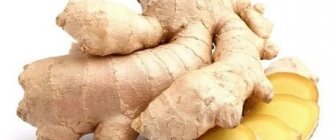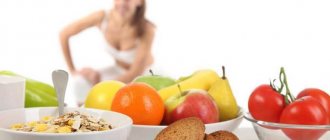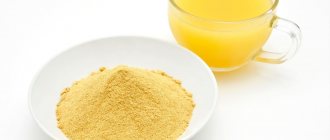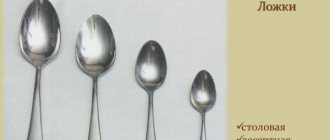What is useful about cottage cheese, what is contained in this product. How much protein does it contain - in fat and low-fat versions. Cottage cheese is a healthy, tasty and satisfying product that is in great demand in bodybuilding. Its features are a large amount of protein (protein) and the presence of a number of other useful elements in the composition. It is obtained by fermenting milk and then removing whey from the composition.
Depending on the manufacturing method, it varies in fat content:
- Bold. In this case, the fat percentage is 18%.
- Bold - 8-9%.
- Low-fat - up to 3%.
Many athletes confidently claim that cottage cheese is a protein. And they are indeed right. The product (per 100 g) contains 15-18 g of casein protein , characterized by a rich amino acid composition and excellent digestibility.
At the same time, it takes an average of 2-3 hours to break down the protein. For this reason, it is recommended to take cottage cheese at night, in the morning or 2-3 hours before training. Below we discuss in detail how much protein is in cottage cheese, what beneficial substances are present in it, and what are the features of a homemade product.
How to identify a quality fermented milk product
The quality standard and naturalness of the curd product must be checked before purchasing the product:
- The number of bacteria must be contained in a size of at least 1x106 per 1 gram.
- The completely natural product contains only sour milk and sourdough. Possible content of calcium chloride and pepsin in small amounts.
- The product is stored for only 36 hours, but this figure may vary depending on the fat content.
- The weighed product can be easily checked by color, smell and external consistency. Be sure to ask about the production and storage time.
Cottage cheese contains a huge portion of useful substances, and most importantly, a high content of milk protein.
When the purchase of cottage cheese is made, but doubts about its naturalness are tormented, there are several home tests to check it. There are several such methods, it is up to the buyer to decide which one to choose:
- Place a piece of product on a plate for 10-12 hours and leave at room temperature. Fats easily undergo the oxidation process when exposed to oxygen. As a result, the lump of curd should acquire a sharp smell of sour milk. If it has turned yellow and shrunk, covered with a crust, then it contains a lot of harmful palm oil.
- Drop a little iodine onto a lump of sour milk. Blue means the starch level is too high, and brown means it's natural.
- Ordinary citric acid will reveal whether there is chalk in the composition. However, there is a catch in this method; the result may be negative, but chalk can be found in the milk from which the cottage cheese is made. To diagnose, you need to stir a teaspoon of curd in water and add a few drops of lemon juice or vinegar. If there is soda or chalk, they react with acid and the water will hiss or gurgle, this is the difference with an unnatural product.
- Lick a piece of cottage cheese; if an oily trace remains, then most likely the milk fat has been replaced with vegetable fat. A natural product has a more granular consistency and a homogeneous consistency with vegetable fat, this will be different from the curd version of the product.
What to look for when buying cottage cheese
Experts recommend taking into account a number of rules when choosing:
- Composition - it is recommended to choose a product that contains only two components: sourdough and cow's milk. Currently, this is a rare case: enzymes, flavor enhancers and other components are added. The more auxiliary components, the lower the quality of the product.
- GOST is the sign that guarantees that what is stated on the packaging corresponds to reality.
- Cost – fermented milk products cannot cost less than a liter of milk. A kilogram of cottage cheese is obtained from two and a half liters of milk. Only if the price matches can you hope for normal quality.
- Shelf life – the higher the expiration date, the lower the quality. The average shelf life of store-bought curd mass is a week. Anything that lasts longer is stuffed with preservatives and stabilizers.
- Appearance – good cottage cheese looks attractive and does not have a dry or liquid consistency.
It would also be a good idea to establish the content of starch and vegetable fat. You can do it like this:
- The presence of vegetable fat: for this you need to leave the fermented milk product indoors for a day. If it changes its taste to a more sour one, but remains the same color, the cottage cheese is natural and the quality is high. If a yellowish coating appears on the milk product and the aroma has changed, the product is unnatural.
- Starch content: you need to drop iodine onto a piece of cottage cheese; if the color changes to blue, there is starch in the curd mass.
Iodine
How much protein does it contain?
A fermented milk product is obtained from sour milk, which is divided into whey and a white curdled mass, which is collected and thoroughly squeezed. It is endowed with light sourness, delicate taste and numerous beneficial properties.
Its amino acid composition includes: vitamins, phosphorus, calcium, protein in large quantities. The product does not lose its properties during heat treatment, therefore it is often used in home baking recipes.
Cottage cheese supplies protein necessary for muscle building.
Proteins, fats and carbohydrates of the product:
- protein 15 g;
- fat - 18 g;
- carbohydrates - 2.9 g.
How much protein is in 100 grams of cottage cheese? This is written on the packaging of each product depending on the manufacturer and fat content. In a farm product, you can be sure of its naturalness and authentic composition.
How much protein is in cottage cheese? On average, 100 g contains about 15-17 g of protein. This is a lot, but how much calcium is in cottage cheese? This is an impressive trace element content per 100 grams - 165 mg.
Protein and calcium are especially important for building muscles and bones, which is why they are so necessary for athletes, and the low calorie content is for those losing weight, but for people who want to lose weight on a protein-free diet, it is better to choose other sources of nutrients.
Some tips on how to treat cracked nipples
Discussion: 2 comments
- Svetlana:
01/10/2016 at 01:14Cottage cheese is a supplier of calcium to the body. Regardless of its type, cottage cheese does not change its content. With the help of the cottage cheese diet, you can get rid of extra pounds. It is useful for both children and adults.
- Alina:
01/24/2016 at 01:20
Cottage cheese is a wonderful product. I love it. If you want to lose weight, then you need to treat cottage cheese with caution. It is even possible to exclude it, but only your personal nutritionist can say this. In general, half-fat cottage cheese will not do any harm, but only benefit.
What kind of fat does it have?
Cottage cheese has three groups according to the percentage of fat content and the amount of protein in the cottage cheese will be different for them:
- low fat up to 2%;
- bold 5-9%;
- fat up to 19%.
Which cottage cheese is healthier? The most delicious and healthy is farm or village cottage cheese, which is made by hand from selected milk.
The slow carbohydrates and fats contained in the product increase the feeling of fullness and normalize metabolism.
Depending on the fat content of homemade milk, the fat content in the finished curd per 100 grams depends on it - from 19-25% and about 14 g of protein. The energy value of this product will be high.
The semi-fat product is the most popular; it is made from skim milk. Protein here ranges from 17-19 g, this is the most popular product for athletes and those on a weight loss diet.
An ideal food product with a fat content of 5%, there is a lot of protein - 18 grams.
Low-fat cottage cheese still contains fats, since it is not possible to completely remove them. Here it is from 0.8 to 2%. This product is not the healthiest, as it is difficult for the body to absorb. What is better to consume: low-fat or homemade fermented milk product depends on the goal and task for losing weight.
Beneficial features
The curd mass contains fast proteins, which are very important for human nutrition. They are especially important for athletes, because restoration of muscle mass is impossible without the building material – protein.
Cottage cheese contains a huge amount of easily digestible protein, which varies depending on the fat content of the product.
The amount of protein is calculated for each person individually for each kilogram of weight, based on its parameters and indicators, as well as the level of daily physical activity. How much cottage cheese should I eat? On average 40 grams.
The daily intake depends on the weight of the athlete and the goals set for him.
If a person strictly monitors calories and the amount of fat consumed, then it is worth choosing low-fat cottage cheese. 5% cottage cheese contains little fat, it is digested very easily and quickly, calcium is instantly absorbed.
Useful properties of fermented milk products:
- widely used for heart disease and hypertension;
- removes toxins and harmful substances;
- for men - has a beneficial effect on potency and the reproductive system as a whole;
- strengthens the bones, muscle and nervous system;
- the best product for strengthening teeth and bones;
- benefits for women in the strength of hair and nails, as well as support during pregnancy due to calcium, which is necessary for the female body and the unborn child;
- reduces allergic reactions and improves the immune system;
- the benefits and harms of cottage cheese for older people also exist, because it strengthens bones and teeth, which are destroyed with age, however, there is a risk of individual intolerance;
- The protein in cottage cheese is quickly absorbed and builds new muscle mass, which is why it is often included in a bodybuilder’s diet.
The benefits of cottage cheese for the body are undeniable, because its composition is as balanced as possible.
Possible harm and contraindications
When consuming cottage cheese, the human body fully receives vitamins, protein, minerals and other biologically active components. But it is not suitable for everyone due to health reasons. Obvious contraindications include:
- individual intolerance to lactose and protein;
- allergy to curd products;
- kidney diseases;
- urolithiasis and gallstone pathologies;
- arthrosis
The degree of manifestation of an allergic reaction is not affected in any way by the percentage of fat content. Usually it occurs due to individual substances, and any cottage cheese contains the same amount of them. Most often the provocateur is milk protein.
Nowadays there is a wide range of fermented milk products on sale, including low-fat ones. Many unscrupulous manufacturers add various sweeteners, flavors and other artificial additives to it. They can cause significant harm to health. Therefore, in order to buy a truly high-quality and healthy product, it is recommended to pay attention to the composition. There can be nothing in it except skim milk and sourdough.
The benefits also depend on freshness and compliance with production rules. You should not consume a product that has expired, as this will cause intestinal disorders. Preference should be given to what is produced in accordance with GOST. A yellowish tint to the grains is unacceptable - this is unacceptable for low-fat products.
Despite all the benefits of dietary cottage cheese, it is undesirable to exceed the permissible daily intake. It is enough to eat 400 g. Otherwise, the liver becomes overloaded.
Eating cottage cheese immediately after the training process
Cottage cheese after a workout is very healthy; it contains a lot of protein and calcium, which are involved in the process of building muscles, restoring the body’s energy resource and maintaining the strength of tired muscle mass.
If we consider cottage cheese as the only supplier of protein, then you will need about 500 grams per day.
Depending on the training goal: gaining weight or cutting, you need to calculate the amount consumed in grams, so cottage cheese after a workout should be eaten by those who are in the process of gaining muscle mass.
The harm of cottage cheese to the body in this case is only due to individual intolerance to the product.
During drying
During the cutting period, bodybuilders do not try to gain muscle mass, so they consume low-fat cottage cheese or with a maximum fat content of at least 5%.
You can eat about 150-155 grams per day, dividing this amount into equal meals. Cottage cheese must be eaten in its pure form, without adding sugar, fruit or honey. It is not recommended to eat more than this gram per day.
For those who do not want to consume this particular fermented milk product, you can add eggs, poultry, fish and other seafood to your diet.
For weight gain
With increased muscle mass gain, fermented milk will become an important product in an athlete’s diet. It is important to consume only natural cottage cheese, and not curd mass, because only it contains a lot of protein, which will build new muscle mass.
If you eat unnatural products, then there will be no benefit from such curd at all.
Cottage cheese is recognized as an ideal product for weight loss, as it contains a lot of protein and a small amount of carbohydrates.
Cottage cheese is the most suitable product for gaining weight, since catabolic processes are active during sleep, so you can eat cottage cheese for dinner without fear. Cottage cheese or casein in its composition slow down catabolism. For bodybuilders, there is cottage cheese for dinner and before bed - the optimal time of consumption for muscle growth due to the casein component. In addition, athletes often make a vitamin protein shake with curd and milk, adding a tablespoon of honey.
If you decide to lose weight
When following a strict diet, in order to lose weight, you need to consume only low-fat cottage cheese. This way, the number of calories will decrease due to a decrease in fat in the fermented milk and an increase in the protein component of the product. Cottage cheese before training for those losing weight is allowed in the amount of 150 grams.
How to consume this product for weight loss depends on the initial characteristics of the person and his preferences:
- Small portions and frequent meals a day.
- Eat cottage cheese 3 hours before training, a portion of cottage cheese after training - 2 hours later.
- It is better to eat cottage cheese for dinner when losing weight 2 hours before bedtime.
Curd made from homemade milk
Making cottage cheese at home is very easy. It is enough to ferment about 6 liters of milk, from which you will get 1 kilogram of selected cottage cheese. All ingredients must be natural, this makes the curd mass healthy and dietary, which is suitable for feeding children, athletes and dishes for those who are on a diet.
The easiest and most affordable way to make homemade cottage cheese in the oven:
- Pour 6 liters of selected homemade milk into a large saucepan and cover with a lid.
- Preheat the oven to 140 degrees and put a saucepan with milk to simmer for 45 minutes.
- Turn off the oven and leave the resulting yogurt until it cools.
- Remove the curdled milk through several layers of gauze and let the whey drain for several hours.
Homemade cottage cheese is ready!
Cottage cheese is the most valuable product for the body. No matter how many grams of protein it contains, carbohydrates are still present, but a large amount of protein promotes the rapid absorption of carbohydrates, accelerating metabolic processes.
Cottage cheese in Ancient Rus'
It is known that they also knew how to cook cottage cheese in Ancient Rome, India and Rus'. In Rome, this type of cheese was revered by both the poor and the rich. In ancient times, people consumed this product with milk, honey and wine. But Hindus believed that cottage cheese was the favorite food of the god Krishna, which gives strength and cures diseases. Therefore, it is not surprising that this lactic acid product was part of many ancient rituals in India.
The Russians made cottage cheese from yogurt. Pots of the drink were kept in the oven for several hours, then the contents were poured into cone-shaped linen bags and pressed down with a press. If our ancestors wanted to extend the life of the product, then several times they placed the strained cottage cheese in a pot and sent it to the oven. The procedure was repeated until the cheese (that’s what cottage cheese was called in Rus') was completely dry. Then it was poured with ghee and stored in a clay container in the cellar. This way the cottage cheese could be stored for several months. By the way, in those days, drier cheese was more valuable [1][2].











